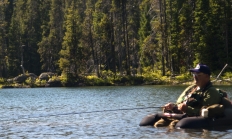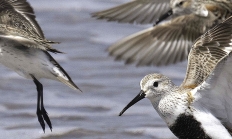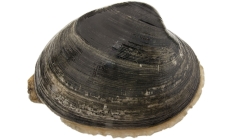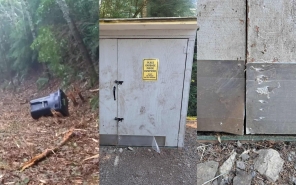
Search myodfw.com


Whether it's concerns about your local fishery, questions about an upcoming hunt, or comments about an agency policy, we want to hear from you. Please feel free to call or send us an e-mail.


The development of the WWA began in 1953 with the acquisition of five parcels of land consisting of 4,400 acres. The Department continued to purchase additional lands, acquiring 1,670 acres in 1954 and another 760 acres in 1955. From 1961 to the present the department has purchased or received another 4,219 acres. The wildlife area currently consists of 12,419 acres owned by the department. In addition, the department, through agreements with the Bureau of Land Management (BLM), manage 1,329 acres within or adjacent to the wildlife area. The WWA was established in response to continuing complaints from landowners concerned with
Final draft of Oregon’s State Wildlife Action Plan now available for public review; Meeting set for July 16
SALEM, Ore. – ODFW completed a final draft of the 2025 State Wildlife Action Plan (SWAP), now available online for public review. A virtual public meeting will be held on Wednesday, July 16 at 6 p.m., where ODFW staff will present highlights from the plan and answer questions. The public can view…

Features: Butter clams have oval and oblong shaped shells with heavy, thick valves and hinge. Their shells have fine concentric rings. When the shell is open a little, you can see the pale ruffled mantle reminiscent of a tuxedo. Like the gaper clam, they have their two siphons fused together into one "neck." Average adult size is 3-4 inches but can range up to 5 inches. Butter clams can live more than 20 years. Habitat: Butter clams can be found in a wide variety of substrates but prefer sand and gravel/cobble beaches. They live approximately 6-12 inches deep and can

Features: Gaper clams have large "neck" housing the two siphons that protrude above the substrate surface when feeding. Protective leathery plates are found just below the siphon tips and feel rough to the touch. Gapers are unable to retract their neck entirely into the shell, producing a "gape" in the shell. It is common for algae to grow on their necks and gaper pea crabs to dwell inside the shell with the gaper clam. Habitat: Gapers can be found in high salinity sandy and/or muddy areas in most of Oregon's larger estuaries. Tillamook, Netarts, Yaquina, and Coos are favorite bays

Establishment of the Bridge Creek Wildlife Area initially started in 1961 when a parcel of land was purchased from the Frank Hilbert estate. After the initial purchase, several private holdings were acquired to consolidate the land under department ownership. The last parcel was purchased from the Colvin Cattle Company in 1975. The primary purpose of the wildlife area is to maintain and protect a key historic winter range for Rocky Mountain elk ( Cervus elaphus nelsoni).
Chris Kern, Region Manager Fisher research in southern Oregon Fisher are a Species of Greatest Conservaion Need in Oregon's State Wildlife Action Plan, and ODFW is actively conducting research to understand fisher occupancy and distribution east of I-5, as well as that of their competitors and predators. Wildlife Research staff maintained 30 baited camera traps in the Cascade-Siskiyou National Monument and Southern Cascades. The cameras were deployed in mid-September on U.S. Forest Service and Bureau of Land Management lands in areas with proposed habitat management efforts. The goal is to evaluate how these land alterations influence changes in mesocarnivore occupancy


The fall bear eat-a-thon is on – keep bears, people and pets safe by securing trash
A black bear tried its best to get into a Neskowin homeowner's bear resistant trash can. The homeowner then built a small shed to enclose the trash can. The persistent bear left its prints and claw marks on the shed but did not succeed in breaking into it. This resident understands the need to be…

Salmon hit more milestones in the Klamath River: Chinook reach areas above Upper Klamath Lake
Image: The circles show monitoring stations in the basin and the green shows detection of a tagged salmon. KLAMATH FALLS, Ore. — Salmon are making exciting progress in their return to the upper Klamath Basin, with fisheries biologists from ODFW and The Klamath Tribes celebrating a series of firsts…


Build bird houses for ODFW. Teach families to fish. Walk a stream or hike in a forest looking for animals or sign of animals to support various studies. Teach others to hunt or about hunter safety. Assist Marine Reserves with onshore or offshore studies. These are just some of the things ODFW volunteers do to help protect and enhance Oregon's natural resources. Current volunteer opportunities


